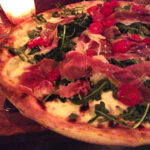Chinatown in New York City is a neighborhood that pulses with life, a vibrant tapestry woven from rich history, captivating culture, and of course, incredible food. For anyone wanting an authentic slice of New York, Chinatown is a must-visit destination. While there are many famous streets within this iconic enclave, Pell Street stands out as a particularly significant artery, embodying the spirit and evolution of Chinatown itself.
Pell Street isn’t just another street; it’s a historical landmark that has witnessed the ebb and flow of Chinese immigration and community development in New York. Stepping onto Pell Street is like stepping back in time, with its narrow lanes, traditional storefronts, and the lingering aroma of exotic spices and simmering broths. It’s a place where the past and present intertwine, offering visitors a unique glimpse into the heart of Chinese culture in America.
To truly understand the magic of Pell Street and Chinatown, taking a guided exploration is invaluable. Recently, Bowery Boys Walks launched a “Tastes of Chinatown: Neighborhood History and Food Tour,” led by the knowledgeable guide Robert Zhu. Robert’s tour masterfully combines the neighborhood’s fascinating history with its renowned culinary scene. He shared insights into how he curated this immersive experience, blending historical narratives with delicious food stops.

Robert Zhu on Pell Street, guiding a tour through the historic Chinatown neighborhood.
Robert, who moved to New York City in 1995, describes his instant connection with the city. “I found New York City inspirational, inclusive, and forgiving,” he explains. “If one year in a dog’s life equals seven years in a human’s life, one New York City day is seven days in other cities, if not more!” His fascination with the city’s layered history and diverse cultures led him to tour guiding, a way to share his passion for New York with others.
When asked about what makes Manhattan’s Chinatown so distinctive, Robert highlights its historical significance and diverse population. “Although Manhattan’s Chinatown is no longer the largest Chinese population outside of Asia — that is now Flushing Chinatown in Queens — it still has the most diverse Chinese immigrant population with many Chinese dialects spoken.” He elaborates on its origins as a settlement for railroad workers escaping discrimination in California in the 1870s. “It welcomed the tired, the poor and huddled Chinese immigrants despite the Chinese Exclusion Act of 1882, and today it is still the beating heart of all Chinatowns on the East Coast.” This historical context underscores the resilience and enduring spirit of Chinatown, qualities palpable as you walk down Pell Street.
Food is undeniably a central draw to Chinatown, and Robert’s tour expertly navigates this culinary landscape. His approach to selecting restaurants for the tour is deeply personal and rooted in family tradition. “I ate a lot of food at many different places,” Robert laughs. “I have the best research team one can hope for, it consists of me, my dad, and my mom.” He explains how his parents provided invaluable insights and recommendations, forming the basis of his curated food tour.

A vibrant display of fresh produce at a market in Chinatown, showcasing the neighborhood’s rich culinary offerings.

Delicious dumplings, a staple of Chinatown cuisine and a highlight of food tours in the area.
The beauty of Robert’s tour lies in its seamless integration of history and food. He emphasizes the cultural significance of food in Chinese society. “Food is an integral part of any culture. Cooking and enjoying delicious meals with family and friends is a big deal in Chinese society. We discuss almost everything including social issues and personal affairs over family-style dishes.” Drawing a parallel to Anthony Bourdain, Robert aims to connect culture, history, and cuisine in a meaningful way, offering tour participants a richer understanding of Chinatown.
When asked about his favorite spots in Chinatown, Robert mentions key intersections and landmarks that encapsulate the neighborhood’s character. “The intersections of Doyers, Pell, and Mott Streets, East Broadway, and of course, the Golden Noodle Pegasus.” He particularly highlights the Golden Noodle Pegasus, a striking statue located where Pell Street meets Doyers Street. Installed in 2017, this artwork, rumored to be crafted from dried egg noodles in Shanghai, symbolizes the resilience and creative energy of Chinatown. “My understanding is that it symbolizes the power of creative spirits in all of us and helps Chinatown to weather the bad times and renew itself.” The Golden Noodle Pegasus serves as a fitting emblem for Pell Street and the enduring spirit of Chinatown.

The Golden Noodle Pegasus sculpture soaring above Pell Street in Chinatown, a symbol of creativity and resilience.
Robert’s ultimate goal for his tour participants is to leave feeling “satiated — both physically and intellectually.” This encapsulates the holistic experience he offers – nourishing both body and mind with the flavors and stories of Chinatown.
And when faced with the classic dilemma – noodles or dumplings? Robert decisively chooses, “It’s got to be the dumplings!”
Ready to explore Pell Street and the wonders of Chinatown? Consider embarking on a tour with Robert to fully immerse yourself in the history, culture, and delectable cuisine of this iconic New York City neighborhood.
Sign up for a tour with Robert right here.

